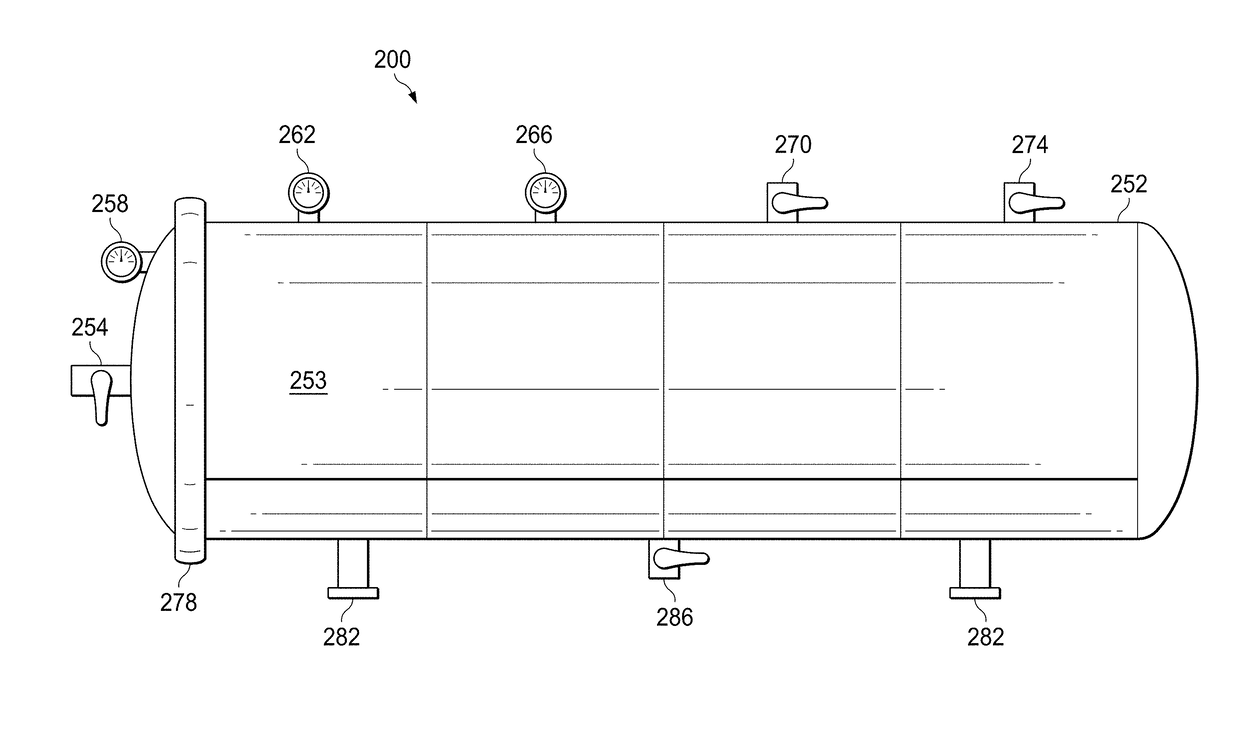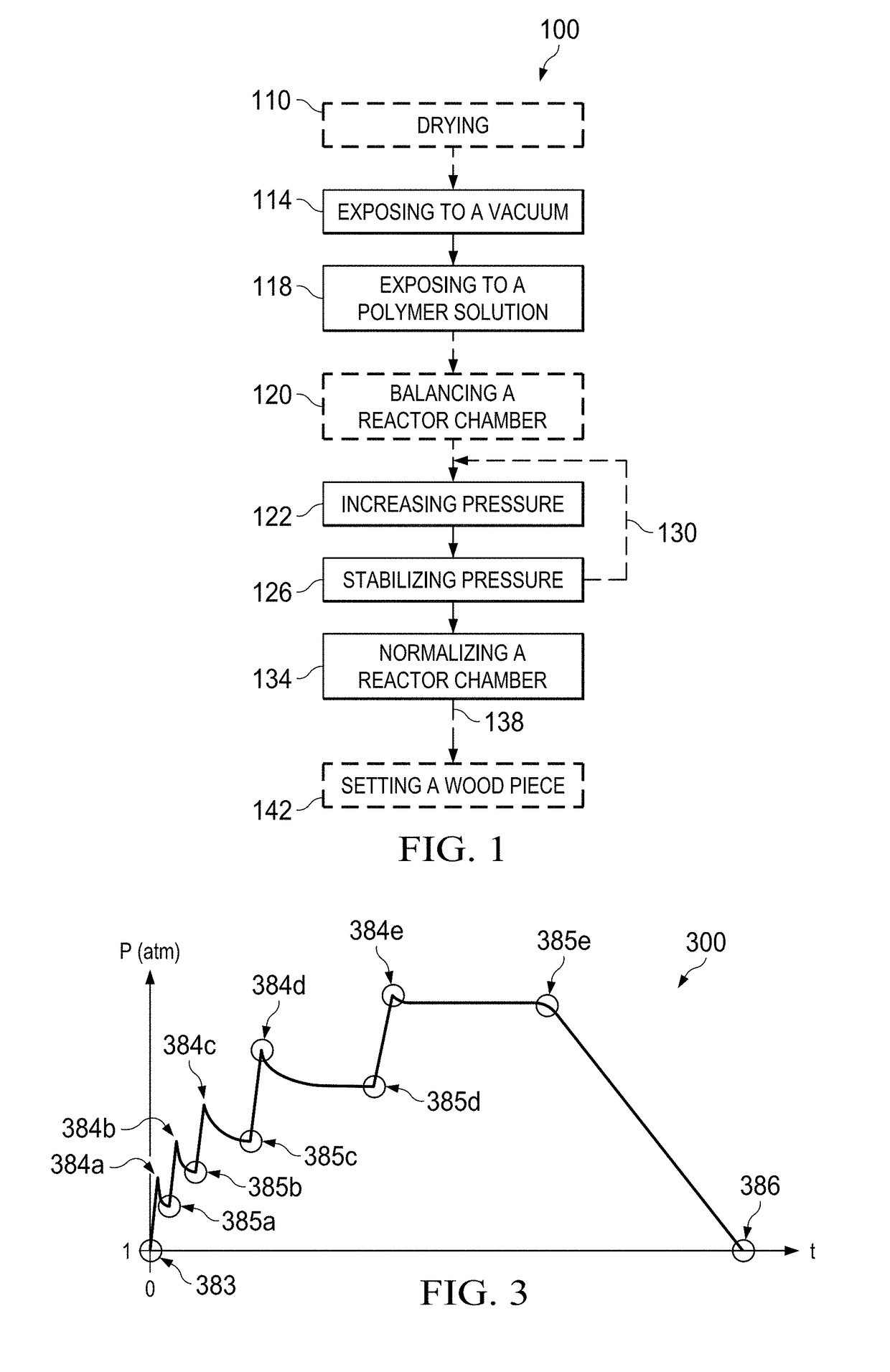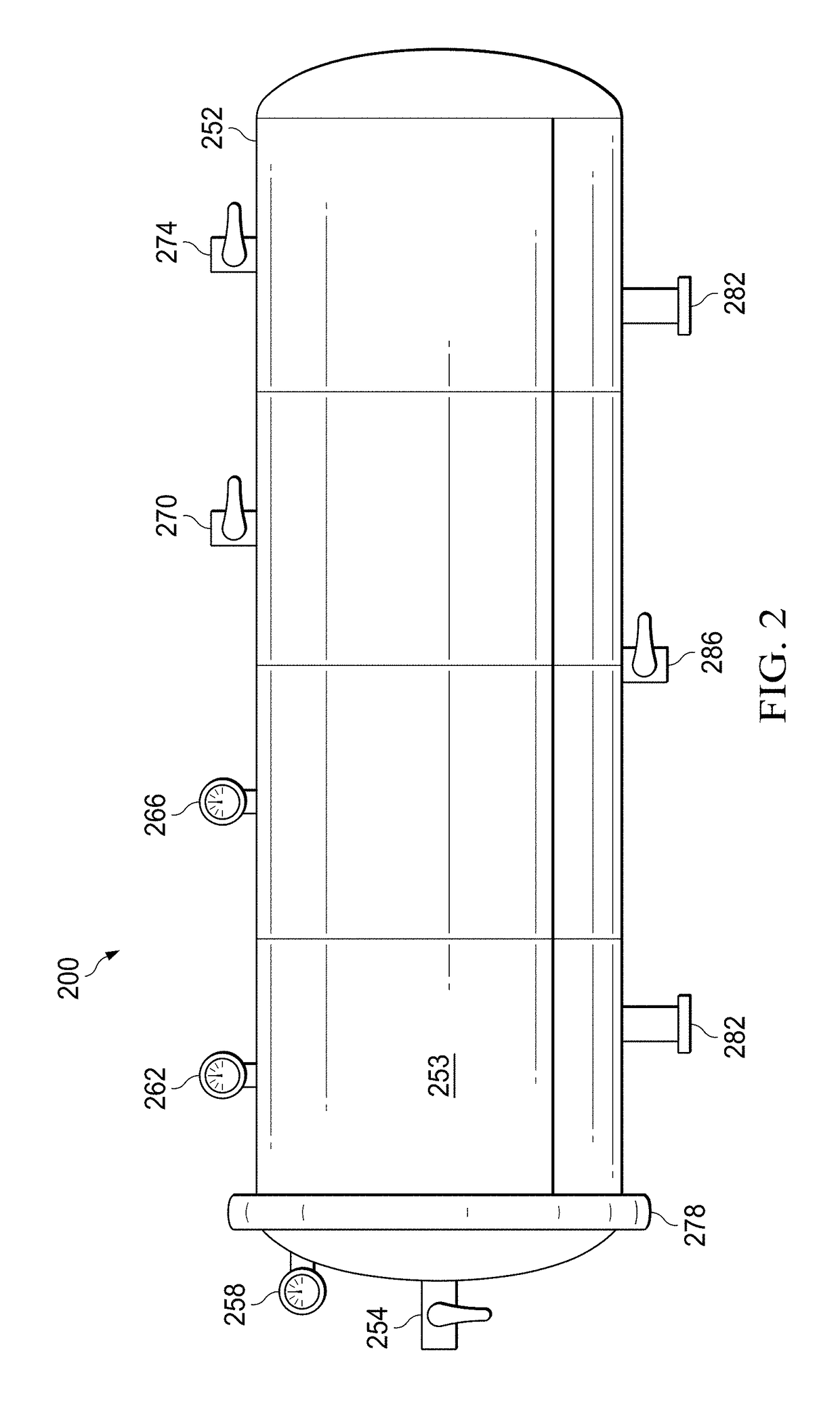Methods and systems for impregnating wood with a polymer solution and products thereof
a polymer solution and impregnating technology, applied in the field of methods and systems for impregnating wood with a polymer solution and products thereof, can solve the problems of limited success of the process, unsuitable plantation wood, etc., and achieve the effect of increasing the chamber pressure, improving quality, and increasing the chamber pressur
- Summary
- Abstract
- Description
- Claims
- Application Information
AI Technical Summary
Benefits of technology
Problems solved by technology
Method used
Image
Examples
example 1
[0094]An example embodiment of the present invention as applied to pine wood.
[0095]As a first step, wood pieces required for the experiment were acquired by extracting wood blocks from peeled fresh pine timber. These wood blocks were further cut into pine strips measuring 90 cm×20 cm×2 cm. Three identical strips were selected. In this example, these pine strips are referred to as strips 1, 2, and 3, respectively. Each of the pine strips, 1, 2, and 3, was cut into five wood pieces, as depicted in FIG. 4 (illustrating a single example strip).
[0096]As shown in FIG. 4, a pine strip was cut into five wood pieces which were designated as A, B1, B2, C1, and C2. The wood pieces were labeled to retain the relative orientation of the five pieces to one another. The wood pieces B1, B2, C1, and C2 each had dimensions of about 40 cm×10 cm×2 cm, and wood piece A measured about 10 cm×20 cm×2 cm. The technical properties of wood piece A are shown in TABLE 4.
TABLE 4Technical properties of...
PUM
 Login to View More
Login to View More Abstract
Description
Claims
Application Information
 Login to View More
Login to View More - R&D
- Intellectual Property
- Life Sciences
- Materials
- Tech Scout
- Unparalleled Data Quality
- Higher Quality Content
- 60% Fewer Hallucinations
Browse by: Latest US Patents, China's latest patents, Technical Efficacy Thesaurus, Application Domain, Technology Topic, Popular Technical Reports.
© 2025 PatSnap. All rights reserved.Legal|Privacy policy|Modern Slavery Act Transparency Statement|Sitemap|About US| Contact US: help@patsnap.com



